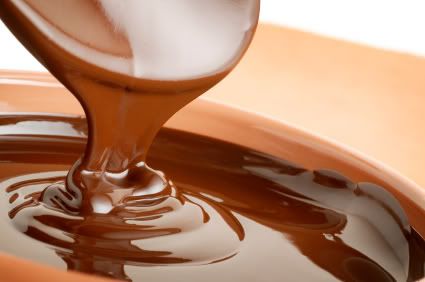
Melting the chocolate
Whichever method you use- in a bain-marie, a microwave or in a bowl over a saucepan of simmering water - chocolate should never be overheated when melting. Remember that the melting point of cocoa butter is approximately 30 degree C. Overheating destroys chocolate's structure, although this may not be obvious to the naked eye. Take care and make sure that the bowl used for melting is perfectly dry.
Add the ingredients to the melted chocolate
Always begin by adding the butter or cream, followed by the egg yolks, if required in the recipe. Remember that chocolate is an emulsion and is therefore very sensitive to water (even if this comes from the egg yolks) , which may cause it to seize or turn into an unworkable solid ball.
Making a ganache
The more chocolate is grated, broken up or chopped, the quicker it will dissolve, with less risk of lumps. The principle is simple, try to stick to it.
Incorporate beaten egg whites in a mousse
Always minimize the mixing time: the more you stir while incorporating the egg whites, the quicker they will lose their micro-bubbles of air.
Allow a chocolate cake to cool
Unmould it and leave to cool on baking rack so that the escaping steam can dissipate without softening the cake.
Using bitter cocoa powder
Always take the time to sift it through a fine-mesh sieve as it tends to settle and go lumpy during storage.
Useful tips: Bitter cocoa powder and all dark chocolates contain theobromine (a bitter alkaloid of the cacao plant) to which some people may be sensitive. To benefit from its positive effects, spread your consumption throughout the day!















No comments:
Post a Comment